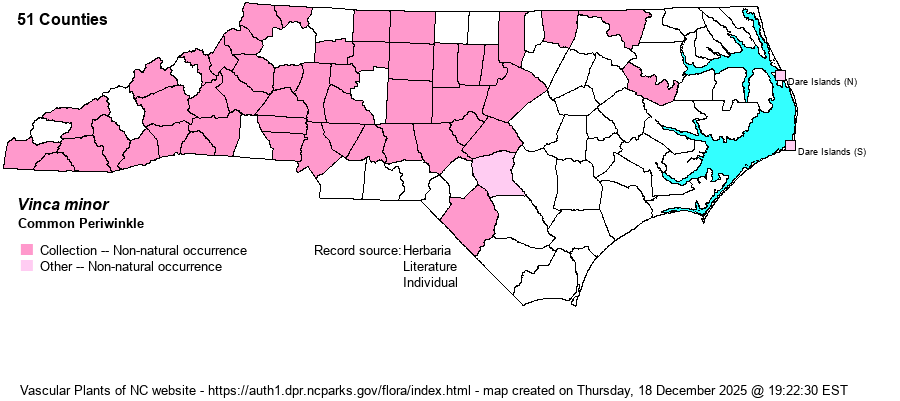| Author | L. | |
| Distribution | Throughout the Mountains and Piedmont; scarce in the Coastal Plain. Reported twice from the Outer Banks of Dare County, but specimens have not been seen. First collected as a roadside escape in 1931 in Buncombe County by Nellie Haynie; then in 1933 in Orange County and 1937 in Wake County.
Native of Europe; in N.A. throughout the US and southern Canada, except the northernmost Plains and some Rocky Mountain states. | |
| Abundance | Frequent to common in the Piedmont and Mountains; rare in the Coastal Plain. Has the ability to form large patches that persist for decades in shady to semi-shady situations, becoming a troubling weed in some natural areas. | |
| Habitat | Roadsides, lawn weed, campus weed, cemeteries, disturbed woods, floodplain woods, pine woods. In woods, probably most frequent where there was a former homesite. |
| Phenology | Flowering and fruiting April-June. | |
| Identification | This often-seen essentially evergreen species is very much like Bigleaf Periwinkle (V. major), but the leaves are about half as wide and broadly lance-shaped, and the flowers are about 1/2 to 2/3 the size of that species; flowers of both are lavender to blue-violet. | |
| Taxonomic Comments | | |
| Other Common Name(s) | | |
| State Rank | SE | |
| Global Rank | GNR | |
| State Status | | |
| US Status | | |
| USACE-agcp | | |
| USACE-emp | | |

